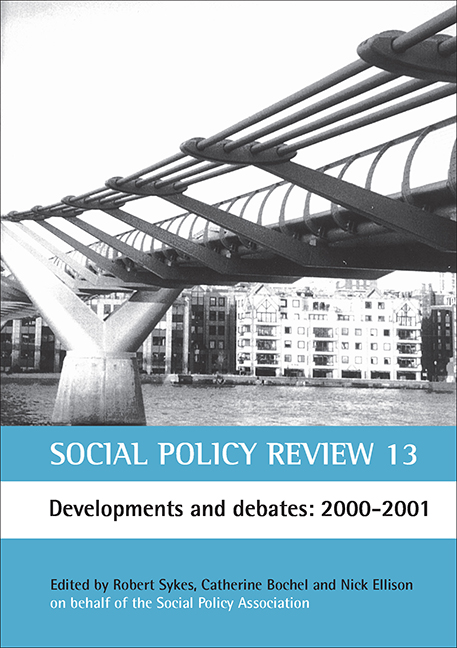three - Playing the game of partnership
Published online by Cambridge University Press: 20 January 2022
Summary
Introduction
New Labour has emphasised a collaborative discourse (Clarence and Painter, 1998; Huxham, 2000; Ling, 2000). This, they argue, represents a Third Way, “a new model for a new century” which is distinctive from both the hierarchy of Old Labour and the market of the Conservatives (DoH, 1997, p 11; DoH 1999, p 8; Powell, 1999). Partnership is the zeitgeist of the Labour government and one of the essential features of the ‘third way’ (Hudson, 1999). Documents in a number of fields stress notions of partnership, interagency working, coordination and a seamless service (for example, DoH, 1997, 1998a, 1998b, 1998d, 1999, 2000; DETR, 2000). However, Challis et al (1988, p x) point out that partnership is a word in search of ways of giving it effective meaning in practice. In government circulars and ministerial policy pronouncements, it is largely a rhetorical invocation of a vague ideal. Ling (2000, p 82) claims that the partnership literature amounts to “methodological anarchy and definitional chaos”. No government appears to have the alchemist’s stone to transform base words into golden partnerships. Local partnerships fit well with governance, which has a central characteristic of game playing (Rhodes, 1997). However, although local agencies must work in ‘partnership’, measures of the extent of and mechanisms to achieve partnership are not fully clear. In other words, local stakeholders are told that they must play the game of partnership without being fully informed of the rules.
In this paper we aim to deduce from both the conceptual literature and from government rhetoric some of the rules of the game, and then illustrate their application with empirical data. The conceptual material involves fusing the ideas of the ladder of participation (Arnstein, 1971) with a continuum of partnership (Hudson et al, 1997; 1999b). This provides the conceptual rungs of the ladder. The dimensions of partnership are based on a review of recent literature, and are examined in terms of policy, process and resource streams (Powell and Exworthy, 2001). Our empirical material is based on data collected as part of a study of how health inequalities policy is implemented at local levels.
- Type
- Chapter
- Information
- Social Policy Review 13Developments and Debates: 2000–2001, pp. 39 - 62Publisher: Bristol University PressPrint publication year: 2001
- 2
- Cited by

